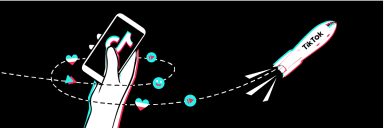In 1999, the Euro was created as a new trading currency; a way for European nations to benchmark their individual economic performance against the region.
The importance of a currency when it comes to ad trading is no different. A single set of agreed metrics, measured the same way for everyone, creates a level playing field in which the market can be equally informed about their investment strategies.
All of the players in an advertising market (advertisers, agencies and publishers) have their own internal data to track how they are performing. This data helps companies set their agendas, objectives and plans for success. But, no two datasets are the same, nor do they measure the same things. This can make it difficult for companies to gauge how they’re tracking against their competitors, or compare the merits of any one medium against another when planning ad investment strategies.
To address this specific challenge, advertising markets the world over have become adept at using ‘joint industry committees’ and other industry associations to set or select methodologies of measurement that suit the conditions of their own trading environment. It can be confronting and challenging, as agreeing on things with your fiercest competitors is never easy – but the rewards are generous when the complexity of data surrounding investment decisions is removed for advertisers.
Fortunately, when it comes to an industry working together for common good, Australian content producers and publishers are a shining example, particularly when it comes to audience measurement.For television audience measurement, OzTAM and Regional TAM have one of the most forward-thinking and hands-on approaches globally. Commercial Radio Australia also has a strong and vibrant trading currency for traditional radio advertising.
Case Example: Digital Ad Trading in Australia
When it comes to measuring the consumption of digital content (reading/watching/listening), the Australia market is endorsed by the Interactive Advertising Bureau (IAB) Australia. This association largely represents the interests of digital publishers (pure online businesses as well as TV networks, print media and commercial radio networks), but also includes significant consultation with the Media Federation of Australia (MFA). The MFA is the primary association representing media planning agencies, and last year spent more than $10 billion of advertiser investment across mainstream media.
When Nielsen first became the endorsed measure of audiences to digital content in 2011, total digital ad spending in Australia has climbed from $2.8 billion to $4.6 billion for the calendar year just ended, according to PWC and IAB Australia. It’s been quite a ride. It’s also provided a window of opportunity in solving the next phase of the digital measurement puzzle: getting a better understanding of how consumers use mobile devices, and finding a better way to measure content with smaller audiences.
How industry collaboration can drive better results
When an industry body has negotiated and selected a measurement methodology on behalf of its members, there will always be ongoing discussion on how it can be further improved. For vendors such as Nielsen and its competitors, this kind of debate, when channelled through an industry association, helps prioritise investment, innovation and most importantly iteration in their methodologies to deliver a better result for the whole of industry, and not just for its biggest players.
Just as the Euro allows member countries to benchmark their economic performance against the market, having an independent currency for digital ad trading works in a similar way. It is essential in driving market unity by providing a single metric to trade and measure advertising, while still giving companies the ability to use their own internal datasets to make decisions that benefit their individual business.


